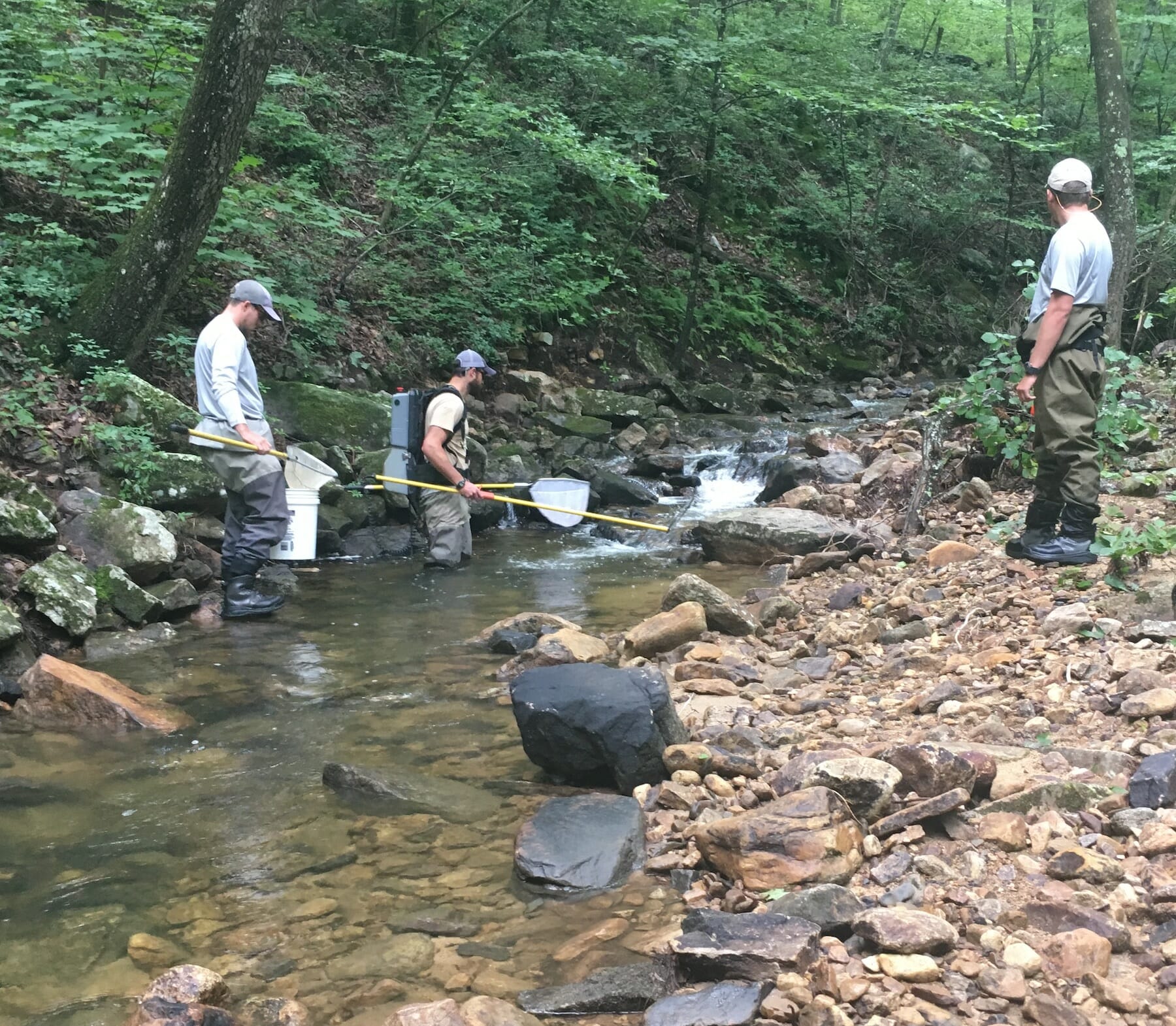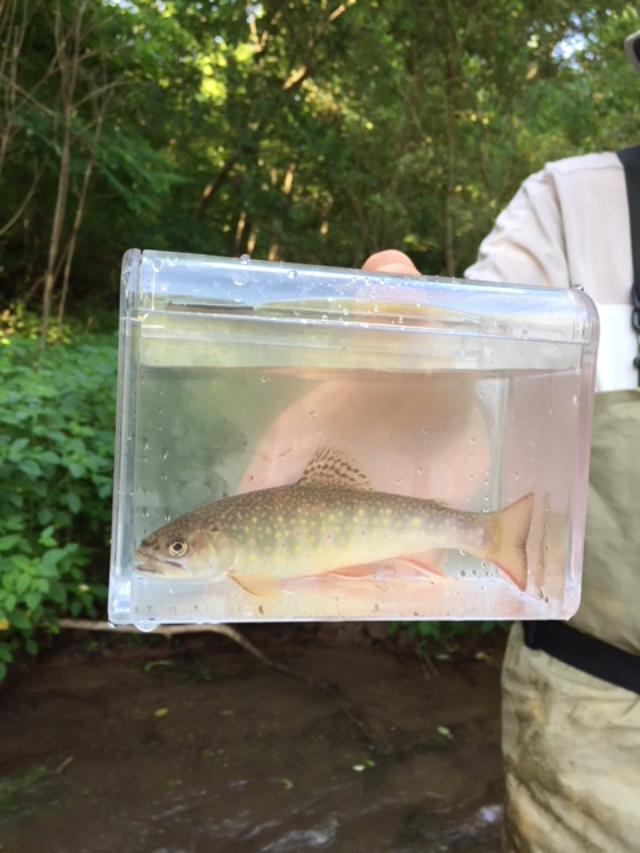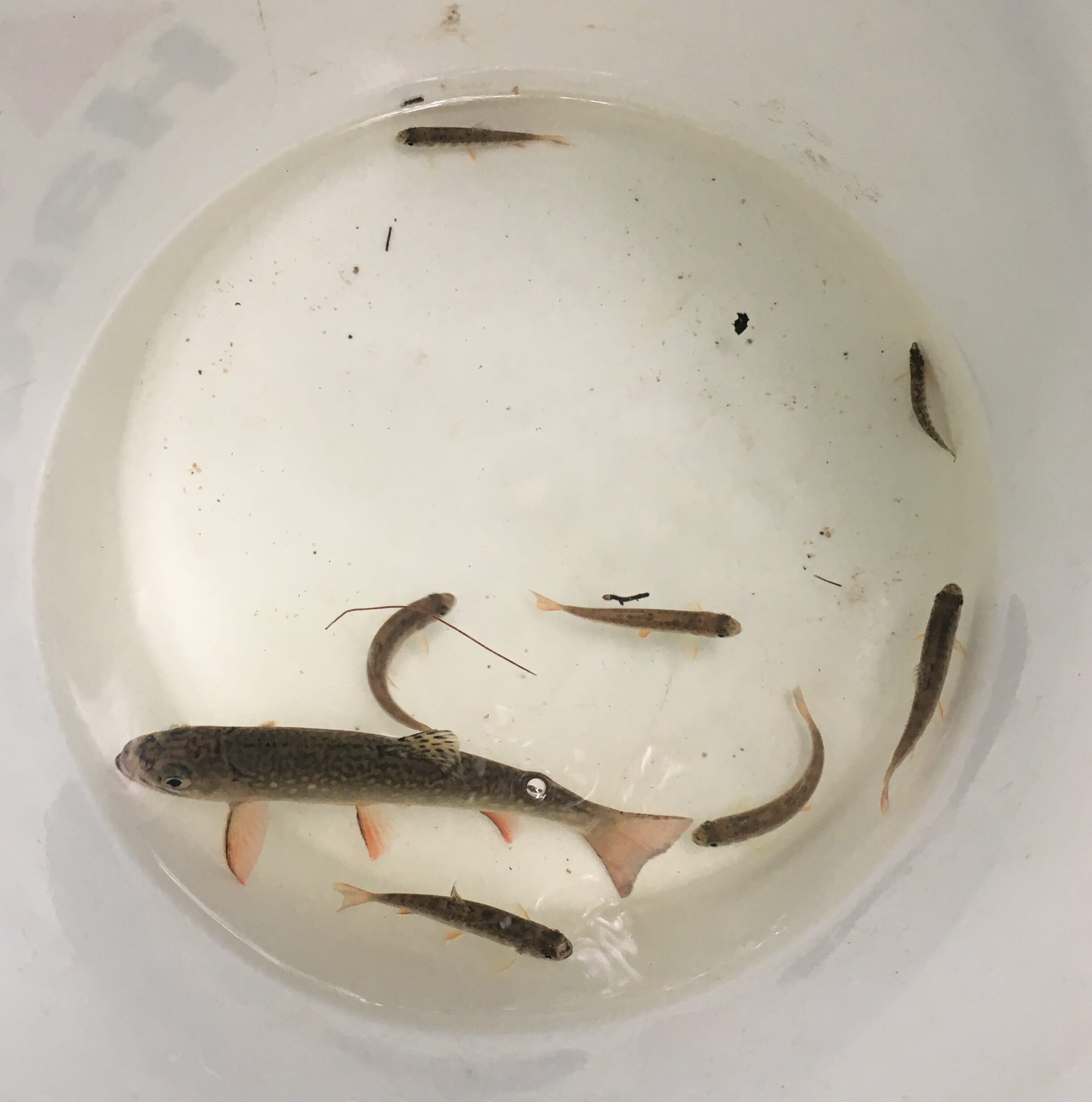Recent electrofish sampling of Virginia’s Passage Creek, site of a native brook trout repatriation effort, found a mix of stream-bred young of the year trout and transplated adults.
By Mark Taylor
A trout stream with no trout?
That doesn’t make sense, does it?
A pair of projects in the East are showing what’s possible when native brook trout are given a chance to establish themselves in streams that, after restoration, now have capacity to support trout.
In Virginia, a native brook trout restoration effort is taking hold in Passage Creek in spite of extreme weather challenges.
And in Pennsylvania, a chapter-led effort to bring back brookies to Aquetong Creek, a small stream restored after a dam’s removal, is also bearing fruit.
In late July, staff from the Virginia Department of Game and Inland Fisheries, the U.S. Forest Service and Trout Unlimited returned to Passage Creek to sample the stream (below) for the first time since wild brook trout were released into the creek in September of 2017.

Steve Reeser, a regional fisheries biologist with DGIF, said the team used backpack electrocking equipment to test several 100-meter stream sections in an area where TU and the Forest Service teamed up on a modest stream restoration project in early 2017.
“We collected eight adult brook trout and nine young-of-year brook trout in the two reaches that were sampled in the area where the wild brook trout were released in September 2017,” Reeser reported. “This is very encouraging considering that the fish endured drought-like conditions from September through March and then have faced high flow events April through July.”
Aquetong Creek is a spring-fed creek in Bucks County, Pa., that was returned to a free-flowing form after a dam was removed in 2013 after years of advocacy from the Bucks County Trout Unlimited Chapter.
Wild brook trout from a nearby tributary to the Delaware River were transplanted into the stream in the spring of 2017. Recent sampling has found both adult (below) and young of the year trout — evidence that the fish are reproducing.

Aquetong Creek is one of only three streams in Bucks County with a population of reproducing brook trout.
The work is not finished at either site.
The Passage Creek restoration team had considered transplanting some additional wild trout into the stream but have decided to hold tight on that and give the trout a chance to build up their numbers on their own. In the future there will be additional surveys of water temperatures, according to Reeser, who added that population samples will be repeated in 2019.
Solebury Township plans work to remove lakebed sediment from Aquetong Creek, an effort that should improve spawning habitat and that could improve reproductive success for the stream’s new trout residents.
“In some ways it is remarkable that the trout are doing so well,” Kevin Randall, of Bucks County TU, told the New Hope Free Press. “The water temperature of Aquetong Spring, at 52 degrees, is, of course, perfect for brook trout. But considering that no stream restoration has taken place, and yet trout are thriving, makes me very hopeful for their future prospects.”



